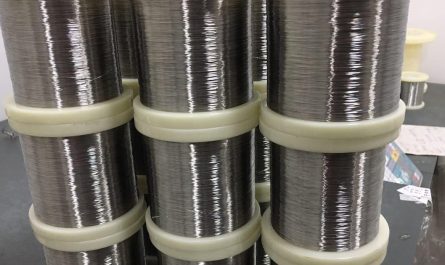Ultra-thin glass refers to specialty glass that is less than 1 mm in thickness and is widely used in various electronic devices such as touchscreens in smartphones, smart watches, tablets, laptops, televisions, and appliances. It offers a strong yet light form factor and enhances the functionality of touchscreen devices by providing transparent barriers against scratches and breakage while responding well to multi-touch capabilities. Besides consumer electronics, ultra-thin glass finds applications in the construction and automotive industries where lightweight and durable glass panels are required. There is a growing demand for foldable display technology in premium smartphones which further fuels the need for flexible ultra-thin glass.
The global Ultra-Thin Glass Market is estimated to be valued at US$ 20.33 Bn in 2023 and is expected to exhibit a CAGR of 7.2% over the forecast period 2023 to 2030, as highlighted in a new report published by Coherent Market Insights.
Market key trends:
One of the key trends witnessed in the ultra-thin glass market is the increasing demand for flexible glass. Smartphone and tablet manufacturers are focusing on developing foldable and rollable display devices to provide an enhanced user experience. Conventional glass is rigid and brittle which poses challenges in flexible applications. Hence, companies are innovating lightweight and flexible glass varieties through ion exchange and plastic coating processes which can withstand bending and folding without breakage. Another major trend is the use of chemically strengthened ultra-thin glasses in displays to provide high strength and damage resistance for tough mobile device usage conditions.
Porter’s Analysis
- Threat of new entrants: The threat of new entrants into the ultra-thin glass market is moderate due to the existing presence of major players and capital intensive nature of the market.
- Bargaining power of buyers: The bargaining power of buyers is moderate as there are many established players providing ultra-thin glass. However, customized solutions differentiate vendors.
- Bargaining power of suppliers: The bargaining power of suppliers is low due to availability of substitute raw materials and differentiated product options.
- Threat of new substitutes: The threat of new substitutes is low as ultra-thin glass offers unique properties compared to plastic films and metal foils.
- Competitive rivalry: The ultra-thin glass market experiences high competitive rivalry due to established brands providing innovative and customized glass solutions.
Key Takeaways
The global ultra-thin glass market is expected to witness high growth.
Regional analysis: The Asia Pacific region dominated the global market in 2023 and is expected to continue its dominance during the forecast period. China, Japan, South Korea are the major contributors to the growth of ultra-thin glass market in the region.
Key players operating in the ultra-thin glass market are Corning Inc., AGC Inc., Schott AG, Nippon Electric Glass Co., Ltd., Central Glass Co., Ltd., Xinyi Glass Holdings Limited, AIR-CRAFTGLASS, NOVALGLASS, and Tawian Glass Group. These players are focusing on new product development and expansion strategies to gain high share in the market.
*Note:
1. Source: Coherent Market Insights, Public sources, Desk research
2. We have leveraged AI tools to mine information and compile it




